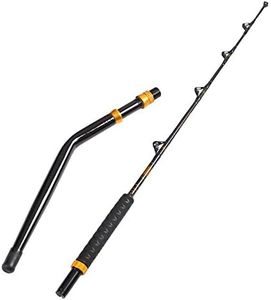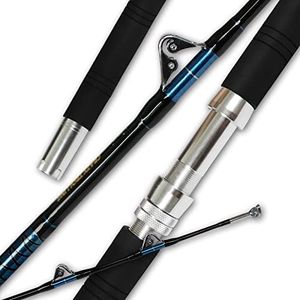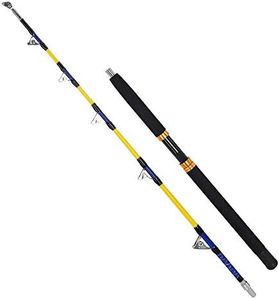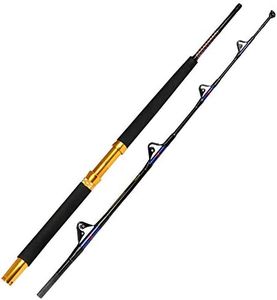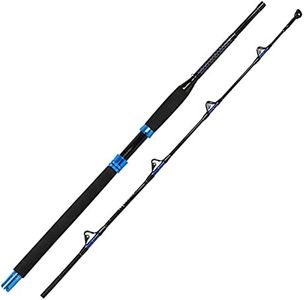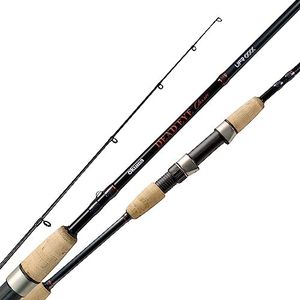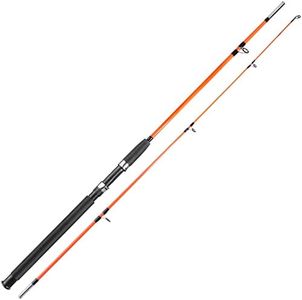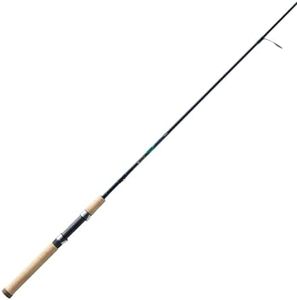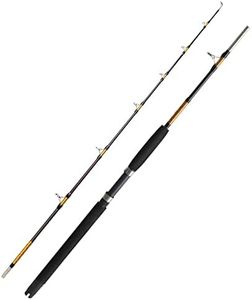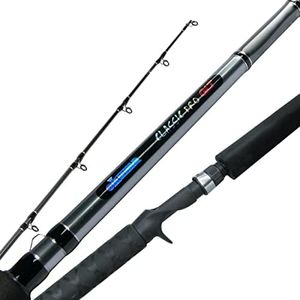We Use CookiesWe use cookies to enhance the security, performance,
functionality and for analytical and promotional activities. By continuing to browse this site you
are agreeing to our privacy policy
10 Best Trolling Rods
From leading brands and best sellers available on the web.Buying Guide for the Best Trolling Rods
Choosing the right trolling rod is an important step to ensure you have a successful and enjoyable fishing experience. Trolling rods are specially made for dragging lures or bait behind a boat, and they face unique demands compared to other fishing rods. The best trolling rod for you will depend on the type of water you fish, the species you target, and your own comfort and style. You’ll make better choices by understanding what each key feature means and how it matches with your fishing habits.LengthRod length is the total measurement from tip to butt. It's important because it affects how much line you control and how much pressure you can put on the fish. Shorter rods, typically 5-7 feet, give you more power and are easier to handle in smaller boats or rough water. Medium-length rods, around 7-8 feet, strike a balance between power and flex and are great all-rounders for general trolling. Longer rods, 8-10 feet or more, offer more leverage for fighting large fish and make it easier to spread lines further apart when trolling with multiple rods. If you fish in tight spots or close to the boat, go shorter. If you need to cover more area or target big fish, go longer.
PowerRod power means how much force it takes to bend the rod. It’s sometimes called the rod’s 'strength,' and it’s crucial since trolling can involve big, hard-fighting fish. Powers range from light, medium, and medium-heavy, up to heavy. Light and medium-power rods are best for smaller freshwater species and lighter lures. Medium-heavy is a good choice for most general trolling. Heavy power rods are for large fish like king salmon or offshore species. Think about the average size of the fish you’ll target: smaller fish need a lighter rod, while big game fish need something stronger.
ActionRod action describes where and how much the rod bends when you put pressure on it. Fast action rods bend mostly near the tip, making them more sensitive and better for quick hook sets. Moderate action rods bend more toward the middle, providing a balance of flexibility and strength, which is nice when trolling for a mix of fish sizes. Slow action rods bend down toward the handle; they’re more forgiving during long fights and help prevent hooks from tearing out. Choose fast action for sharp strikes and aggressive hook sets (smaller species), moderate for versatility, and slow for bigger, hard-running fish that might take long runs.
MaterialTrolling rods are made from different materials, each affecting their weight, strength, and feel. Fiberglass rods are sturdy and forgiving, ideal for beginners and trolling in rough conditions because they’re hard to break. Graphite rods are lighter and more sensitive, letting you better detect bites, but they can be more brittle. Some rods use a blend of graphite and fiberglass for both sensitivity and strength. If you need durability (for saltwater or big fish), fiberglass works well. If you want lightness and to feel every nibble, graphite is best. Blends suit those who want a balance.
Line RatingLine rating tells you the recommended strength of fishing line (measured in pounds) that pairs well with the rod. Using a line that matches the rod’s rating helps you avoid breaks and maximize performance. Lighter rated rods (8-20 lbs) handle smaller fish and lighter gear. Medium ratings (15-30 lbs) cover most general freshwater and inshore saltwater needs. Heavier rods (30-50+ lbs) are for big saltwater fish or trophy catch situations. Match your expected fish size and fishing line to the rod’s line rating for best results.
Guides and Reel SeatThe guides (small rings along the rod) and reel seat (where your reel attaches) are important for handling heavy loads and repeated use. Good guides make sure your line moves smoothly and can stand up to corrosion if you fish in saltwater. Durable reel seats hold your reel firmly even under strong pressure. For saltwater, look for corrosion-resistant components. If you’ll fight big fish, choose rods with reinforced seats and heavy-duty guides. For light freshwater trolling, standard components will usually suffice.
Handle StyleHandle style affects comfort and control throughout the day. Handles come in materials like cork, foam, or rubber. Long, straight handles give you lots of leverage for battling strong fish, while shorter or contoured handles make the rod easier to maneuver if you need to change lines often. Pick a handle that feels comfortable in your grip and matches how long or how forcefully you’ll be holding the rod.
